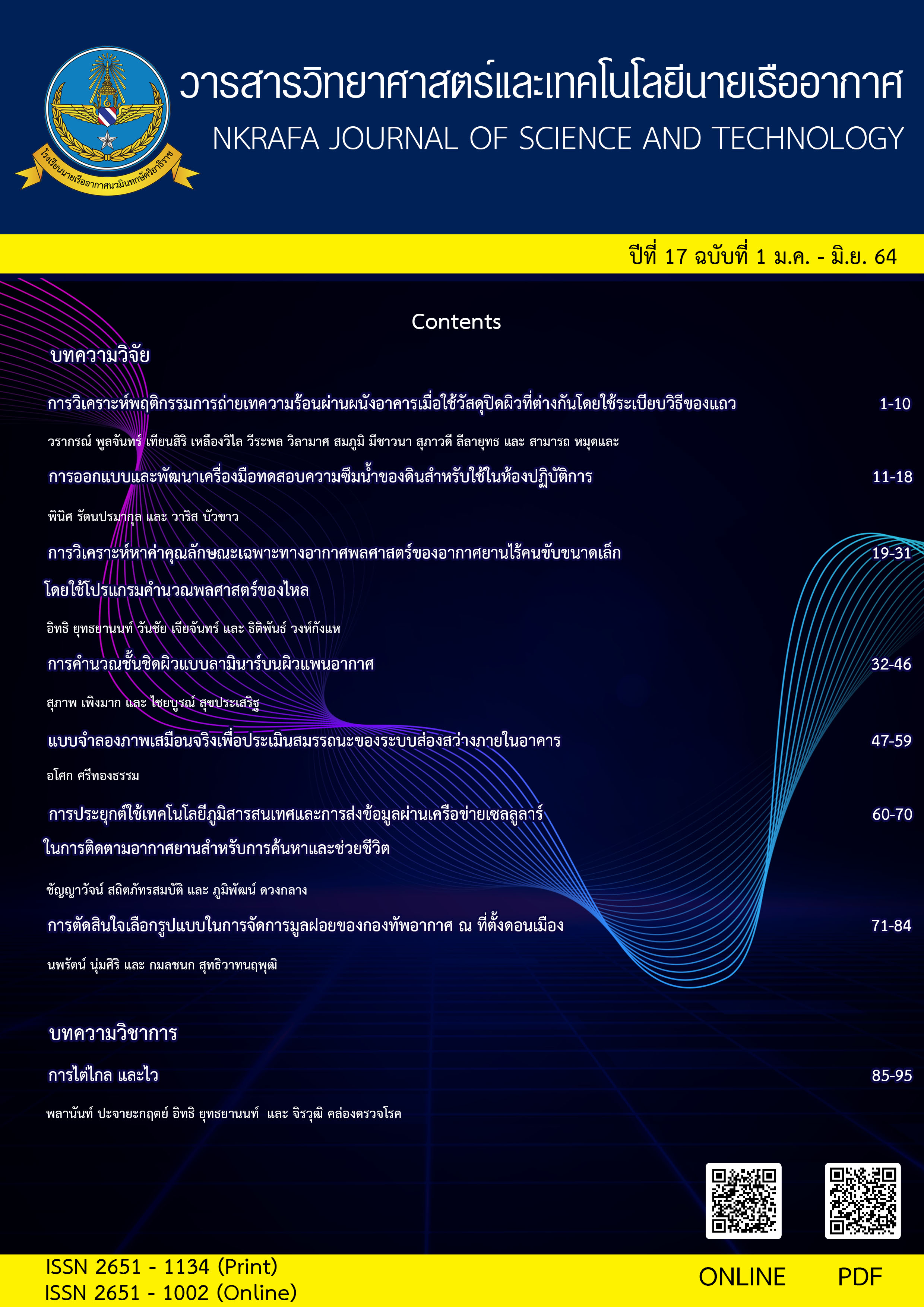Laminar Boundary Layer Calculation over Airfoil Surface
Main Article Content
Abstract
In the initial stage, the 2 dimensional panel method will be used to determine aerodynamic characteristics of an airfoil. But its results still have a lot of errors, especially the results in high angle of attack region. The significant cause of these errors is that the 2 dimensional panel method considers its incoming flow is inviscid which is different from the real viscous flow. Therefore, in order to obtain better results, the determination of aerodynamic characteristics of an airfoil must take the effects of viscosity into attention. One method can deal with this is to apply the boundary-layer equations. In this research the boundary-layer equations will be used to approximate variables within laminar boundary layer which is the first boundary layer of inviscid flow over an airfoil starting from airfoil stagnation point till its transition point. At first, solutions of boundary-layer equations are obtained by using finite different method based on second order partial differential equations to construct system of quasi-linear equations and to solve for boundary-layer velocity profiles. Then, boundary-layer variables such as displacement thickness, momentum thickness, form factor, and skin-friction coefficient will be determined with the assumptions are: the flow has low Reynolds number passing over NACA 0012 airfoil and using the velocity distributions at the edge of its boundary layer obtained from the 2 dimensional panel method. The obtained results will be compared with the results of the same types obtained from the references and find that they are consistent with each other and have low differences.
Article Details

This work is licensed under a Creative Commons Attribution-NonCommercial-NoDerivatives 4.0 International License.
- Content and information in articles published in NKRAFA Journal of Science and Technology are comment and responsibility of authors of articles directly. Journal editorial do no need to agree or share any responsibility.
- NKRAFA Journal of Science and Technology Articles holds the copyright of the content, pictures, images etc. which published in it. If any person or agency require to reuse all or some part of articles, the permission must be obtained from the NKRAFA Journal of Science and Technology.
References
[2] Joseph A. Schetz, Boundary layer analysis, American Institute of Aeronautics and Astronautics, Inc., Reston, Virginia, 2010
[3] Tuncer Cebeci, Jean Cousteix, Modeling and computation of boundary-layer flows, Second revised and extended edition, Horizons Publishing Inc., Long Beach, , California , 2005
[4] A.E.P. Veldman, Boundary layers in fluid dynamics Lecture notes in applied mathematics, Academic year 2009-2010, U niversity of Groningen, The Netherland
[5] H. Ozdemir, A. van Garrel, H.J. Seubers, Unsteady Interacting Boundary Layer Method., American Institute of Aeronautics and Astronautics, Conference Paper, January 2017
[6] G. J. Walker, P. H. Subroto, M. F. Platzer, Transition modeling effects on viscous/inviscid interaction analysis of low Reynolds number airfoil flows involving laminar separation bubbles, THE American Society of Mechanical Engineers, 1988
[7] Lelanie Smith, An interactive boundary layer modelling methodology for aerodynamic flows, Department of Mechanical and Aeronautical Engineering , University of Pretoria, November 2011
[8] V. Storch, On viscous-inviscid interaction for boundary layer calculation using two-equation integral method, URL: https//stc.cvut.cz/pdf15/5520.pdf, access on 15/11/2020
[9] T. Cebeci, E. Besnard, H. H. Chen, An interactive boundary-layer method for multielement airfoils, Computers & Fluids Vol. 27, No 5-6, pp. 651-661, 1998


